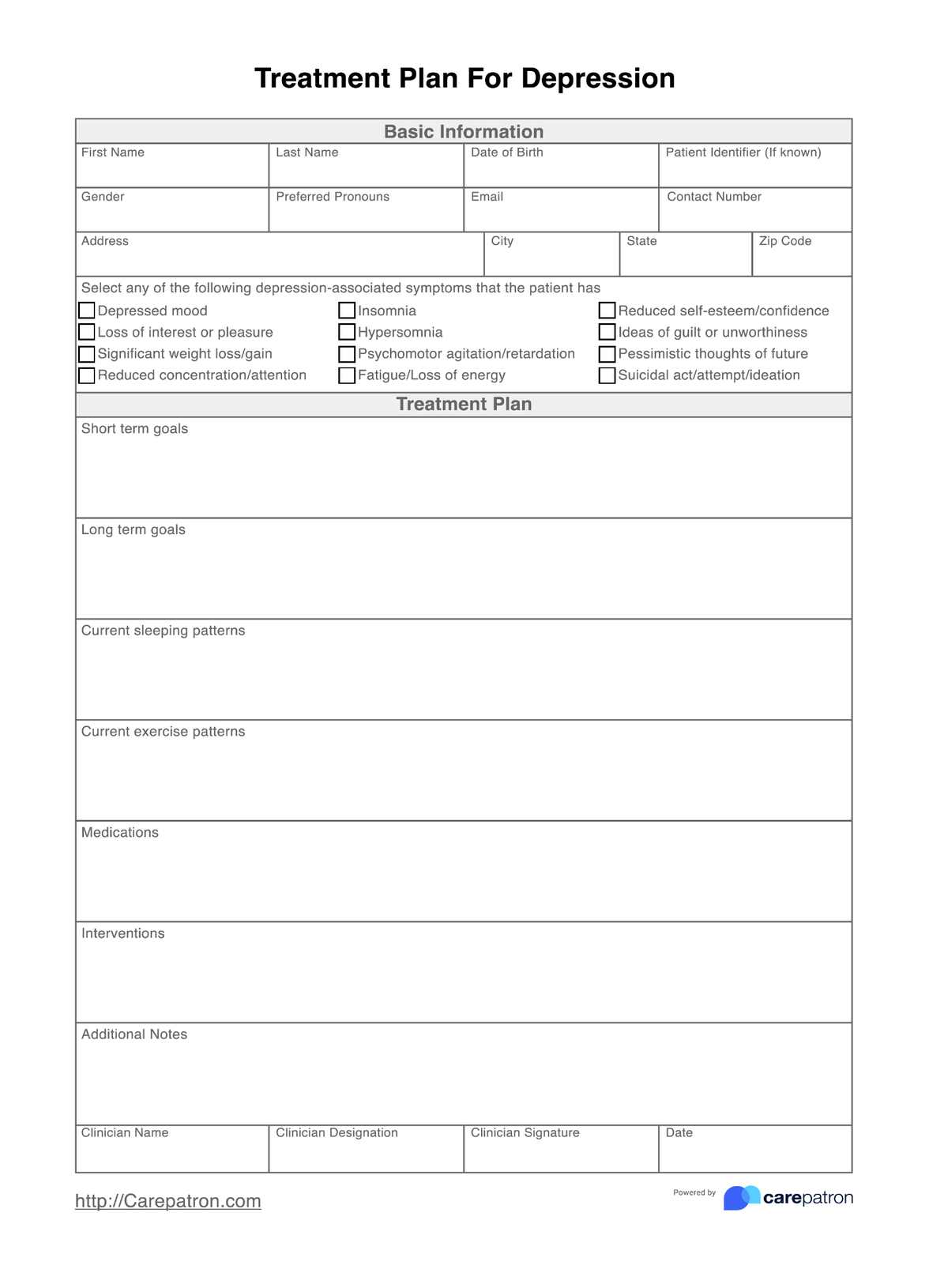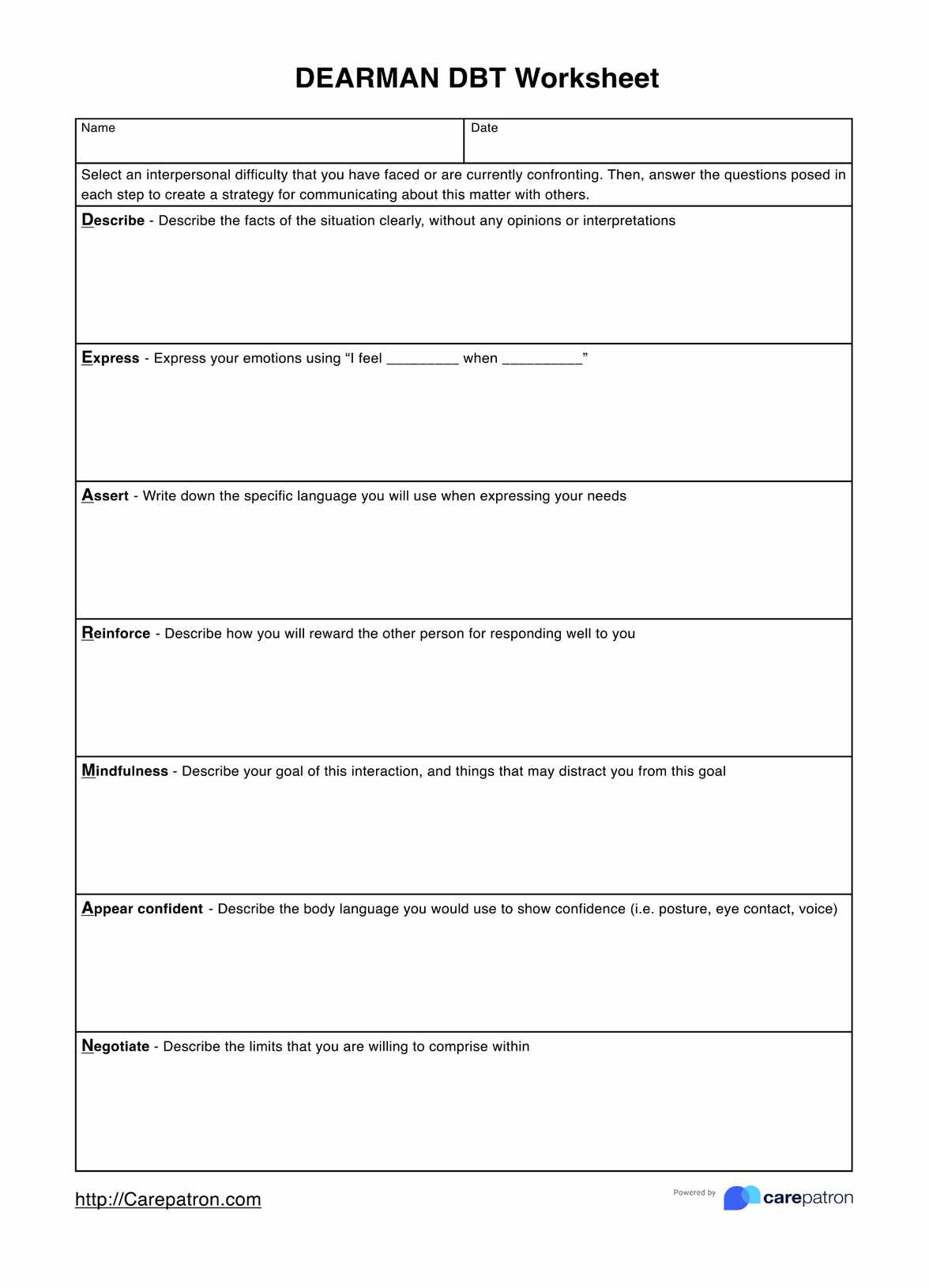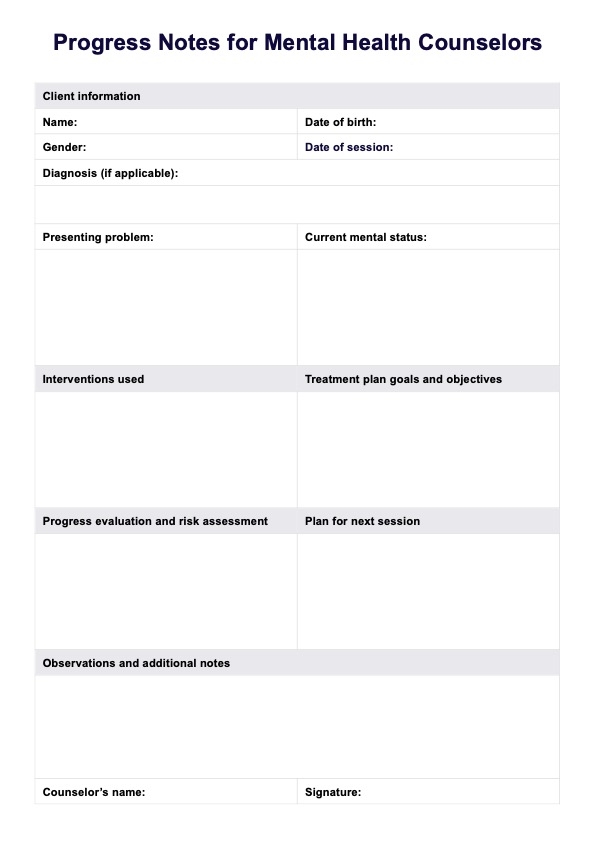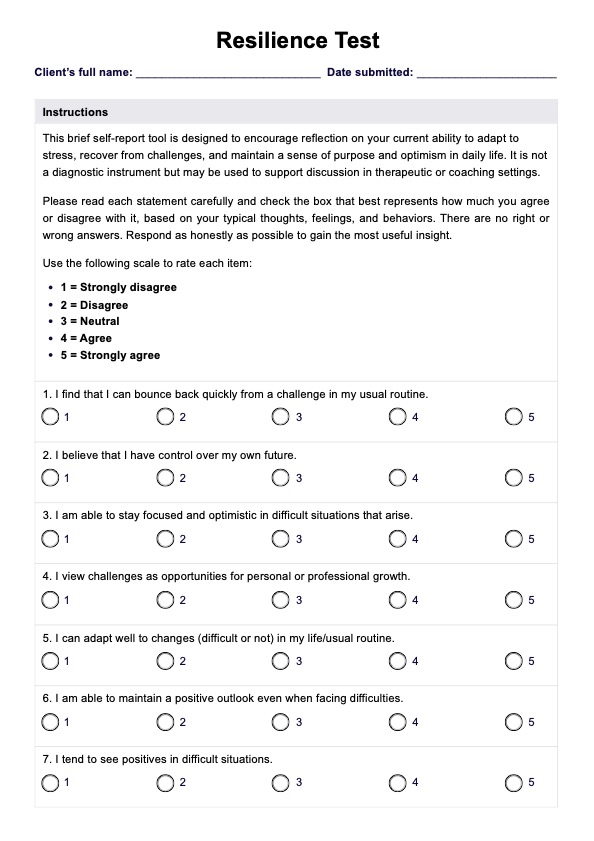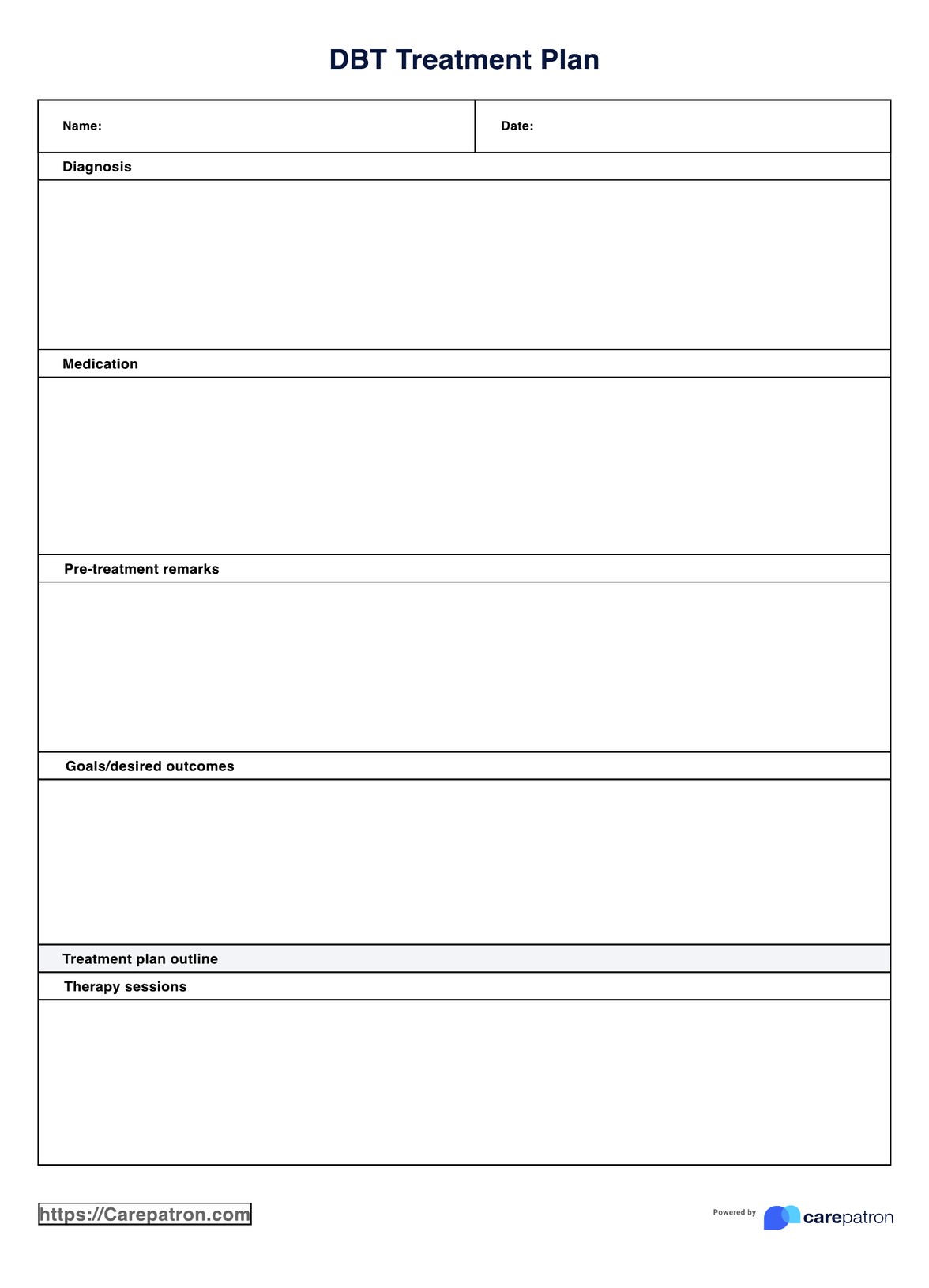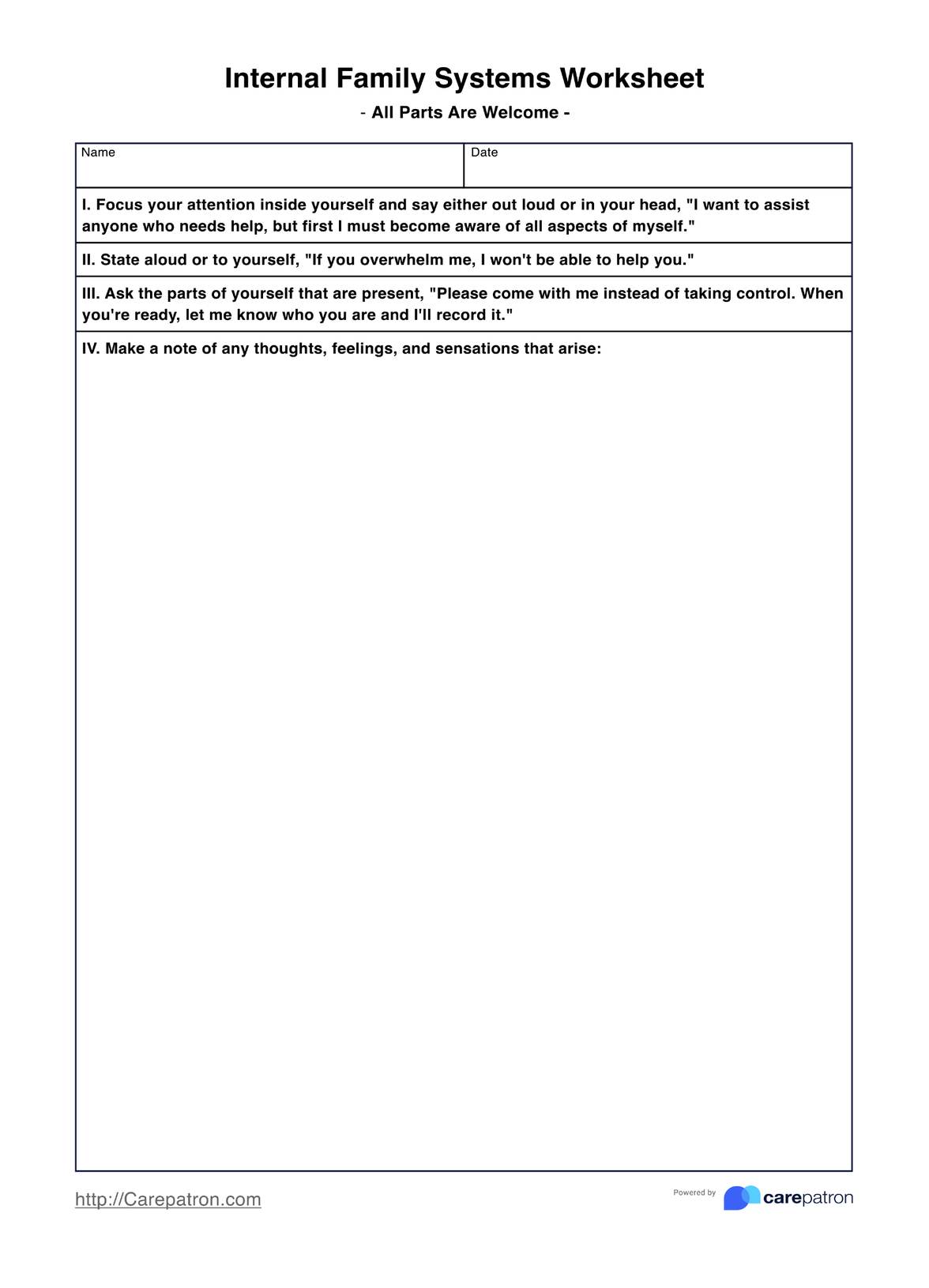Mental Health Checklist
Read a comprehensive guide to understanding a Mental Health Checklist, how it works, and why it's an essential tool for individuals and healthcare providers.


What is a Mental Health Checklist?
This health checklist is a thoughtfully designed instrument to assess the different dimensions of an individual's mental and emotional well-being and how their mental health impacts their daily life. This checklist generally comprises a series of questions or statements that prompt individuals to consider multiple facets of their mental health, such as mood, low self-esteem, anxiety levels, sleep quality, thought patterns, and even physical manifestations of stress or mental fatigue.
The tool serves as a preliminary form of self-assessment, enabling users to understand their emotional and psychological state at any moment. It can even be used as a daily self-care checklist.
The checklist encourages honest self-reflection and can be completed without specialized medical knowledge. While it isn't intended to replace formal psychiatric evaluations or medical advice, it serves as a self-help guide and a framework for dialogue between healthcare providers and patients.
It can be essential in identifying the need for a more detailed evaluation. It is often used with other diagnostic tools to understand an individual's mental health comprehensively. Overall, it provides a structured approach to understanding oneself better, serving as an excellent first step in mental health awareness and care.
Mental Health Checklist Template
Mental Health Checklist Example
How does it work?
Completing a Mental Health Checklist is a straightforward yet insightful process to provide an immediate snapshot of your mental state. It's like taking your emotional temperature, helping to identify whether things are running smoothly or if there might be areas of concern.
Before you begin, it's essential to be in a conducive environment for thoughtful reflection. Understand that the checklist is a personal tool; it's not a test, and no 'right' or 'wrong' answers exist. The goal is to be as honest as possible with yourself, as the value of the checklist lies in its ability to capture your emotional state.
Here are the steps in completing the checklist:
Step 1: Preparation
Find a quiet space where you can focus without distractions. Ensure you have adequate time to complete the checklist without feeling rushed.
Step 2: Fill in personal information
The first section generally asks for basic personal details. This is important for record-keeping and ensures that the checklist, if shared with healthcare providers, is correctly attributed to you.
Step 3: Answer the questions
Carefully read each question or statement and mark the response that best represents your experience over the designated period. Remember, honesty is key for accurate self-assessment.
Step 4: Review and reflection
After completing the checklist, spend some time reviewing your responses. This is a moment for introspection. Try to identify patterns or issues that recur more frequently, as these could be areas that need attention.
Step 5: Consult a healthcare provide
The checklist is a powerful self-awareness tool but not a substitute for professional advice. If your answers indicate emotional or psychological difficulties, the next step is to consult a healthcare provider for a detailed assessment and treatment plan.
When would you use this form?
The versatility of a Mental Health Checklist makes it a tool with many applications. It can be used as a routine part of mental health care, as a quick assessment in emergency settings, or for periodic self-evaluation. Whether you're a healthcare provider or an individual interested in assessing your mental well-being, this checklist is a practical yet informative resource for gathering valuable insights into emotional and mental health.
Uses for Relevant Practitioners:
Therapists and counselors
Mental Health Checklists can be vital to ongoing therapy or counseling sessions. They can track a client's progress or fluctuations in emotional well-being, serving as a conversational anchor for more in-depth discussions.
Primary care physicians
A Mental Health Checklist can be a part of routine health checks, allowing physicians to recognize early signs of mental health issues that may go unnoticed. This early recognition can lead to more timely and effective interventions.
School health services
Checklists can be used to screen students during periodic health evaluations or if a student is seen to be struggling emotionally. This can lead to timely referrals to more specialized mental health services.
Occupational health services
In the workplace, mental well-being is as crucial as physical health. Employers can use the checklist to evaluate the emotional well-being of their employees, particularly in high-stress jobs or situations.
Social workers
A checklist can help social workers assess emotional needs and recommend additional resources or services for those dealing with trauma, life transitions, or other social issues.
Benefits
Understanding oneself or a patient's mental and emotional landscape is a complex process, but the Mental Health Checklist can make this task more manageable and less time-consuming. By reducing the complexities of emotional states to a structured format, the checklist brings several advantages to the table.
Navigating the complexities of mental and emotional well-being can be an overwhelming experience for both individuals and healthcare providers. This resource aims to simplify this process, providing a structured yet flexible framework that offers numerous advantages.
Enhanced self-awareness
One of the primary benefits of using a checklist is the opportunity for enhanced self-awareness and mental wellness. The checklist encourages individuals to stop and think about their emotional state, mood swings, anxiety levels, and many other aspects of mental health that are often overlooked or suppressed. It can support physical and mental health.
Providing a structured set of questions aimed at different facets of mental well-being gives individuals a clearer picture of where they stand emotionally. This self-reflection often serves as the first step in recognizing the need for professional help or lifestyle changes, acting as a preventative measure in mental well being.
Facilitates communication
This checklist is not just an individual tool but an excellent communication medium between patients and healthcare providers. Often, individuals find it difficult to fully express or even understand their emotional difficulties. The checklist's structured format provides common ground for both parties, offering a language that can help articulate specific issues or symptoms.
This can make consultations more focused, meaningful, and productive. It cuts through the ambiguity and hesitancy that can sometimes hamper effective communication in mental health care.
Time-efficient
In today's fast-paced world, healthcare providers and individuals are often pressed for time. One of the significant advantages of a mental health assessment is its efficiency. It can be completed in minutes but offers insights that could take much longer to ascertain through general conversation or less structured assessment forms. This makes it an efficient tool for initial screenings, periodic evaluations, and even emergency assessments, providing a rapid yet comprehensive overview of an individual's mental state.
Accessible
This resource is designed to be universally accessible, offering a tool that doesn't require specialized knowledge to understand or complete. Whether you're a teenager trying to navigate the emotional rollercoaster of adolescence, an adult facing life's myriad stresses, or a senior dealing with the emotional challenges of aging, the checklist is straightforward enough to be used by people from all walks of life.
Its straightforward language and format ensure that it's inclusive and can be a resource for people from various educational and social backgrounds.
Data-driven decision making
For healthcare providers, this resource is more than just a static form; it is a valuable data source. When used systematically over time, these checklists can be archived and analyzed to observe trends and patterns in mental well-being. This longitudinal data can serve as the foundation for data-driven decision-making, providing concrete evidence to inform treatment plans, gauge the effectiveness of interventions, and adjust strategies accordingly.
It moves mental health care from a subjective domain to one that incorporates objective metrics, enhancing the scientific rigor of mental health treatment.
Commonly asked questions
Individuals interested in self-assessment and healthcare providers like therapists, counselors, and general physicians are typical users of Mental Health Checklists.
They are commonly used during initial consultations, follow-up appointments, or periodically for self-assessment to monitor emotional and mental well-being.
The checklist is usually filled out by the individual or with the assistance of a healthcare provider. The answers are then reviewed and discussed to determine whether further evaluation or treatment is necessary.


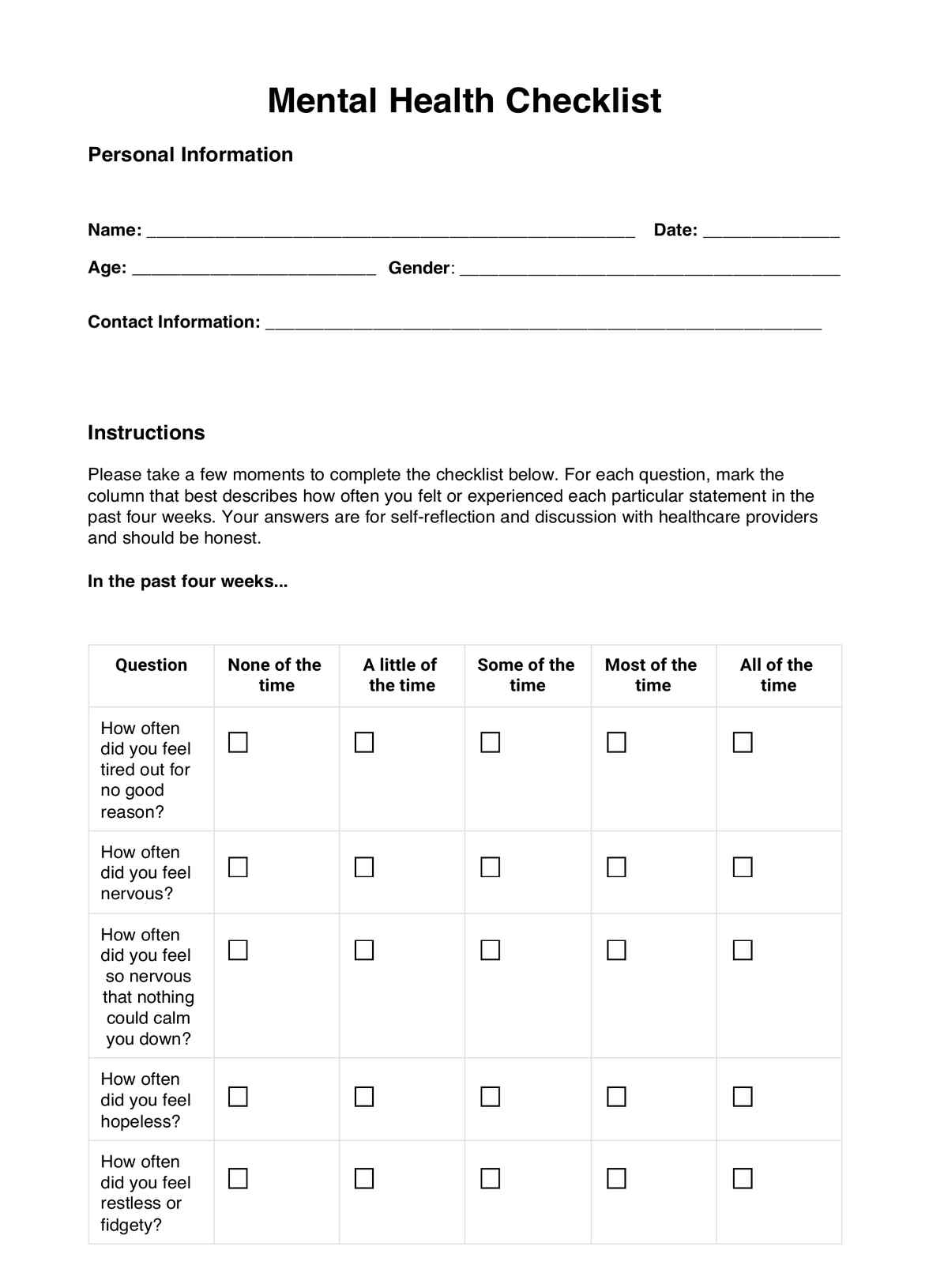
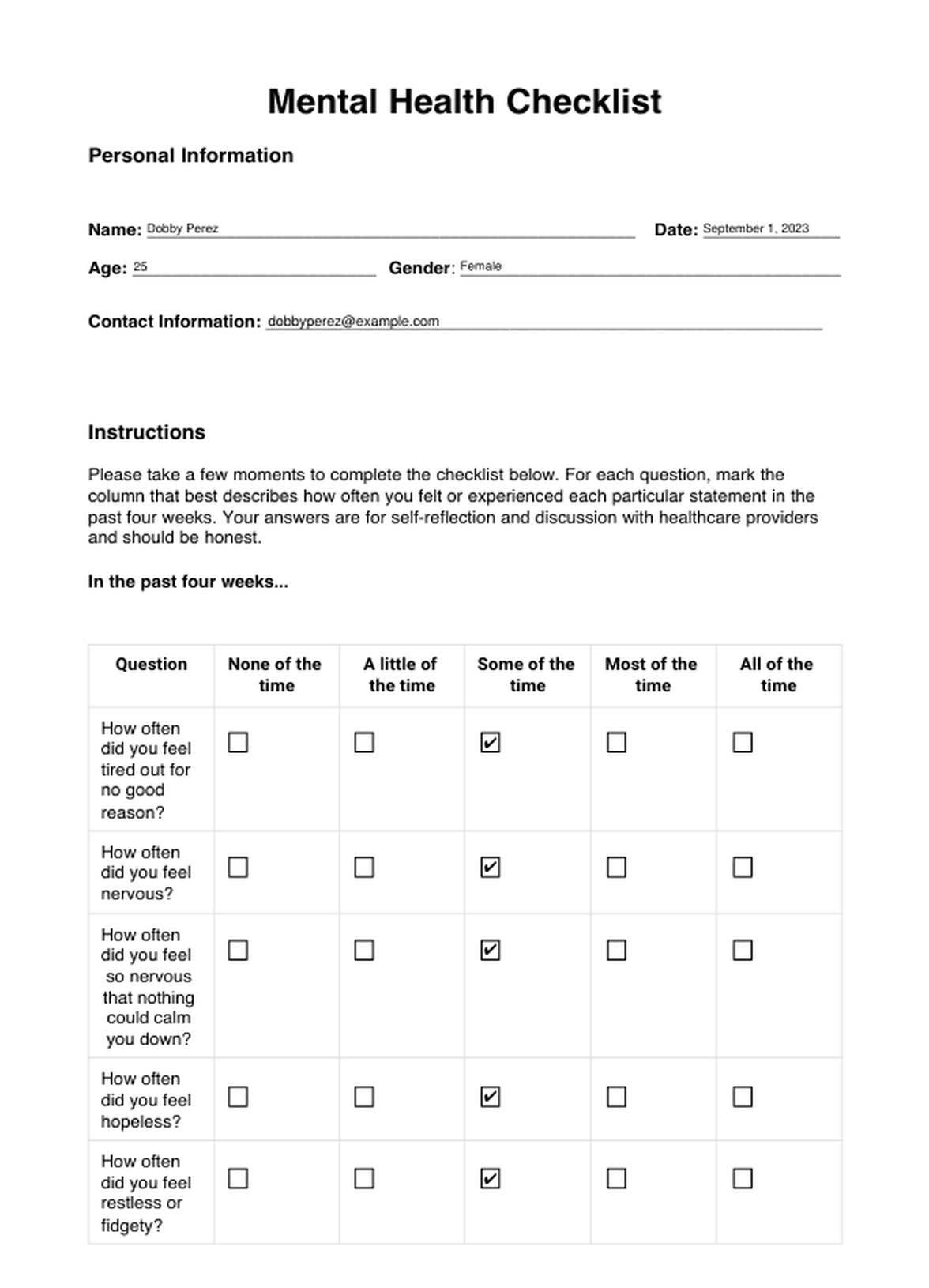

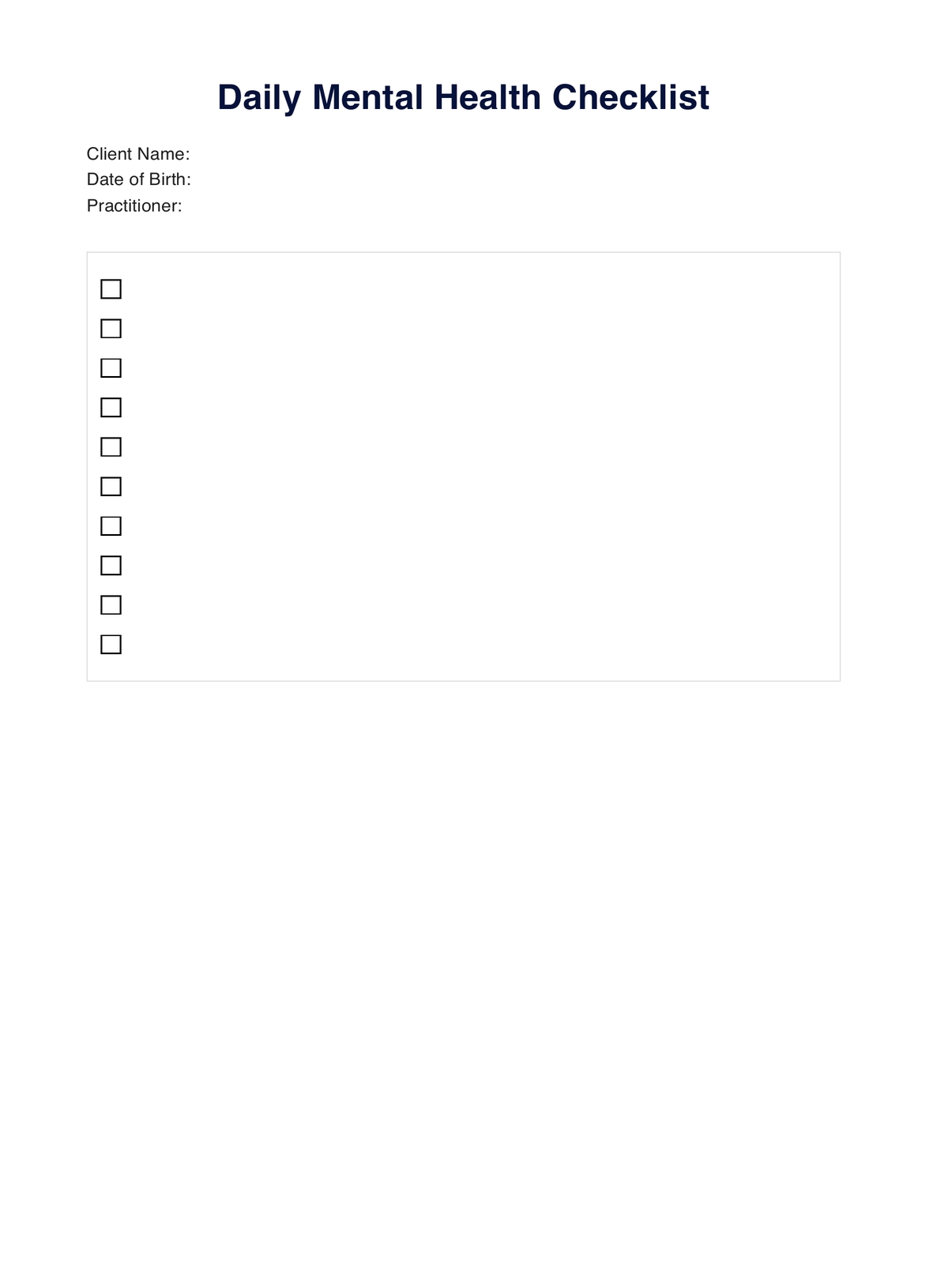
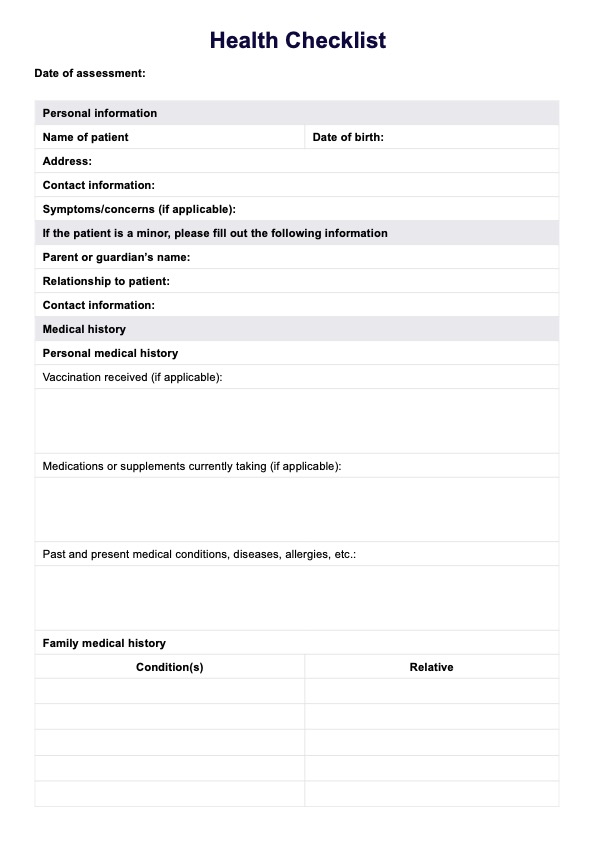













-template.jpg)






















































































